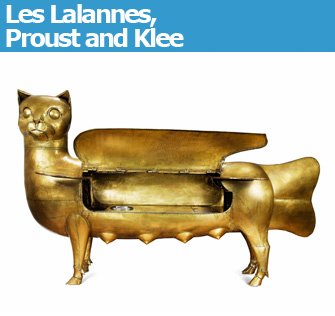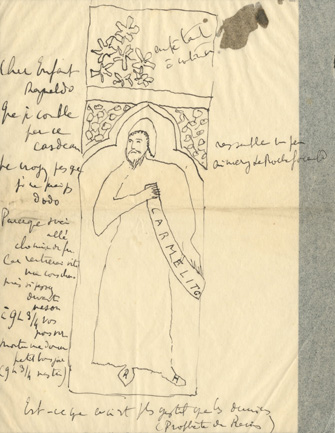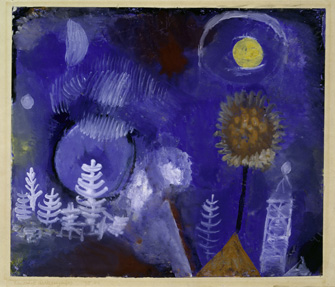 |
|
“Chat Polymorphe,” a sculpture by François-Xavier Lalanne with a bar hidden inside, at the Musée des Arts Décoratifs. |
Here’s a feel-good show if there ever was one, full of works that are not only admirable but that also inevitably bring a smile to one’s face. François-Xavier and Claude Lalanne, both …
 |
|
“Chat Polymorphe,” a sculpture by François-Xavier Lalanne with a bar hidden inside, at the Musée des Arts Décoratifs |
Les Lalannes
Here’s a feel-good show if there ever was one, full of works that are not only admirable but that also inevitably bring a smile to one’s face. François-Xavier and Claude Lalanne, both sculptors, were married and often exhibited their different but complementary work together.
François-Xavier, who died in 2008, made surrealistic sculptures that were not only useful but also extremely witty: a life-sized rhinoceros whose plates open up to reveal a bar or a desk or that can be taken apart and used as furniture, for example, or a flock of wooly sheep, some of them headless, designed to “invade” an apartment and also provide comfy seating. Pull on the belly-button of his “Minotaur” and a drawer opens up. Hidden under the wings of a giant fly is a toilet, while a hippo doubles as a bathtub.
For her part, Claude makes handsome sculptures, jewelry, furniture and flatware in metal with delicate plant and animal motifs. While they, too, are wonderful, it must be said that they are slightly overpowered by the commanding force of François-Xavier’s work. Don’t miss this delightful show.
Musée des Arts Décoratifs: 107, rue de Rivoli, 75001 Paris (wheelchair access: 105, rue de Rivoli). Métro: Palais Royal-Musée du Louvre. Tel : 01 44 55 57 50. Open Tues.-Fri., 11 a.m.-6 p.m. (until 9 p.m. on Thurs.); Sat.-Sun., 10 a.m.-6 p.m. Admission: €8. www.lesartsdecoratifs.fr
 |
|
Marcel Proust’s portrait of Reynaldo Hahn as a Carmelite. © Private collection/Musée des Lettres et Manuscrits, Paris |
Proust, du Temps Perdu au Temps Retrouvé
The heart of anyone who has ever worked in publishing will go out to the printer who had to input Marcel Proust’s corrections to the proofs of his books, some of which are on display in the inaugural exhibition in the new home of the Musée des Lettres et Manuscrits, “Proust, du Temps Perdu au Temps Retrouvé” (“Proust: From Lost Time to Rediscovered Time”). Luckily for us, le petit Marcel just couldn’t stop adding to and improving on his work, even after it had been set in type, pasting on one handwritten addition after another until they became so long that they had to be accordion-folded.
Proust lovers will be deliriously happy to see not only the actual manuscript page bearing the famed madeleine episode, but also many never-before-exhibited gems, including some of Proust’s lighthearted sketches and caricatures (included in letters to friends like his beloved Reynaldo Hahn). Here are letters to and from and many other correspondents, including his devoted servant, Céleste Albaret. Most touching is his last note to Céleste, giving her household instructions, when he was so weak he could barely write. No Proustian should fail to make a pilgrimage to this show.
The little-known museum of manuscripts is now housed in an extremely elegant mansion on the Boulevard Saint-Germain and is a treasure trove not only for those interested in literature but also history, science, music and the visual arts. The fascinating permanent collection includes everything from Einstein’s handwritten formulae to the letter in which Charlotte Corday stated her intention to kill Marat.
Musée des Lettres et Manuscrits: 222, boulevard Saint-Germain, 75007 Paris. Métro: Rue du Bac, Sèvres-Babylone or Saint-Germain des Prés. Tel.: 01 42 22 48 48. Open Tuesday-Sunday, 10am-6pm (until 8pm on Thursday). Admission: €7. Through August 29. www.museedeslettres.fr
 |
|
Paul Klee’s “Paysage du Passé, 1918, 44.” |
Paul Klee: La collection d’Ernst Beyeler
Ernst Beyeler, who died at the age of 88 this year, was a great art collector but also a great businessman, so not all of the six hundred works by Paul Klee (1879-1940) that passed through his hands stayed in his own collection. The Musée de l’Orangerie is currently showing 17 of the Klees that Beyeler managed to hold on to in an exhibition with a total of 26 works, most of them watercolors and drawings.
So, while it is by no means comprehensive, this small show gives a good idea of the great variety of the work of this eminently likable artist, with a sampling of many different styles, some joyous, some somber, some purely abstract, some with his signature stick figures, some with a touch of Kandinsky here, a touch of Miró there. The focus is on the later years, Beyeler’s preference because of the greater expressiveness of the works. This was also the artist’s most productive period– in 1939 alone, Klee produced no fewer than 1,200 works, even though he was ill and discouraged by the rise of Nazism.
Musée de l’Orangerie: Jardin des Tuileries, 75001 Paris. Métro: Concorde. Tel.: 01 44 77 80 07. Open Wednesday-Monday, 9am-6pm. Admission: €9.50. Through July 19. www.musee-orangerie.fr
Support Paris Update by ordering books from Paris Update’s Amazon store at no extra cost. Click on your preferred Amazon location: U.K., France, U.S.
More reviews of Paris art shows.
Reader Reaction: Click here to respond to this article (your response may be published on this page and is subject to editing).
© 2010 Paris Update
Favorite